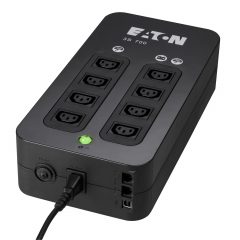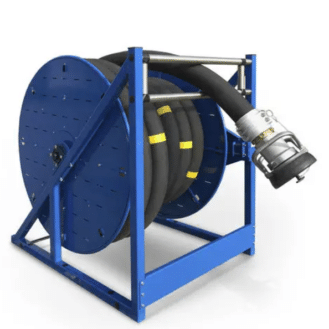
APC datacenter UPS
In order to choose the right UPS to protect your equipment from technical failures, you will have to take into account various elements and ask yourself several questions:
Why do you need a UPS?
A UPS performs two essential functions:
- Protecting electrical equipment from voltage variations and interruptions.
- Stabilizing the electrical voltage and eliminating parasites.
How much power does your equipment need to operate?
Estimate the power requirements of all your equipment in order to correctly size your UPS. To do so, add up the power of all your devices (the power is expressed in VA).
Tip: Favor a UPS with a power output of 20 to 25% higher than the total power of your devices, in order to have greater autonomy.
For computer equipment, it is also important to take into account the power factor of the UPS (ratio between real power in watts and apparent power in VA). For example, servers have a power factor of 0.9.
How much backup time do you need?
Depending on your needs, you can choose your UPS according to its autonomy. In some cases, you may need to switch to a UPS system with backup battery for more autonomy.
- There are 4 types of UPS:
- UPS with 15 minutes of autonomy without a generator:
- In 95% of the cases, power outages last less than 15 minutes, so with this type of UPS your appliances are 95% protected.
- For example, you can save your data or stay online for up to 15 minutes before the system shuts down.
- UPS with 15 minutes of autonomy with a generator:
- The generator starts as soon as the power outage starts.
- This configuration is particularly reliable and provides protection in most situations.
- Redundant UPS with a generator and two feed lines for double conversion servers:
- Expensive configuration.
- Provides protection against all power failures.
- UPS with battery have an autonomy of two hours or more:
- When it is not possible to integrate generators, you will have to opt for a battery solution.
Tip: install energy management software in cases where the duration of the power outage might exceed the autonomy of the UPS. This type of software allows you to save all your work in progress and accompanies the shutdown of all of your sensitive equipment.
What is the voltage of your power source?
- This depends on where you are located:
- In North America the voltage is generally 120V or 208/240V.
- In Europe and Asia, voltage is generally 230V.
- Make sure that the input plug of the UPS matches the sockets of your power source.
Where do you plan to install your UPS?
- UPS come in different shapes and sizes, make your choice according to the space you have available:
- There are rack-mount models that can be mounted in standard rack cabinets (height between 1U and 14U, U = rack space). They are suitable for confined spaces, i.e. for server and network applications.
- For desktop applications or networked workstations, opt for the tower format (with the UPS placed upright on the floor, a desk or a shelf.)
- There are also very compact desktop models. They can be used to protect computers, for example. They are more affordable than tower UPS but have a lower capacity.










so great and informative post
I have just visited your website, and I think it’s great.It was truly Electrical informative.
It’s good to know that an in-line UPSIs an excellent choice for sensitive equipment with an unstable voltage. My husband would benefit from this information since he’s currently looking for a UPS system that fits his needs. I’ll bookmark this article to show him later when he gets home from work. Thanks for this